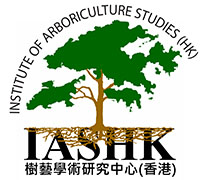the inner portion of the outer bark generated by the cork cambium that stores energy and may photosynthesize.
This article needs additional citations for verification. (September 2022) |
Bark is the outermost layer of stems and roots of woody plants. Plants with bark include trees, woody vines, and shrubs. Bark refers to all the tissues outside the vascular cambium and is a nontechnical term. It overlays the wood and consists of the inner bark and the outer bark. The inner bark, which in older stems is living tissue, includes the innermost layer of the periderm. The outer bark on older stems includes the dead tissue on the surface of the stems, along with parts of the outermost periderm and all the tissues on the outer side of the periderm. The outer bark on trees which lies external to the living periderm is also called the rhytidome.

Products derived from bark include bark shingle siding and wall coverings, spices, and other flavorings, tanbark for tannin, resin, latex, medicines, poisons, various hallucinogenic chemicals, and cork. Bark has been used to make cloth, canoes, and ropes and used as a surface for paintings and map making. A number of plants are also grown for their attractive or interesting bark colorations and surface textures or their bark is used as landscape mulch.
The process of removing bark is decortication and a log or trunk from which bark has been removed is said to be decorticated.
